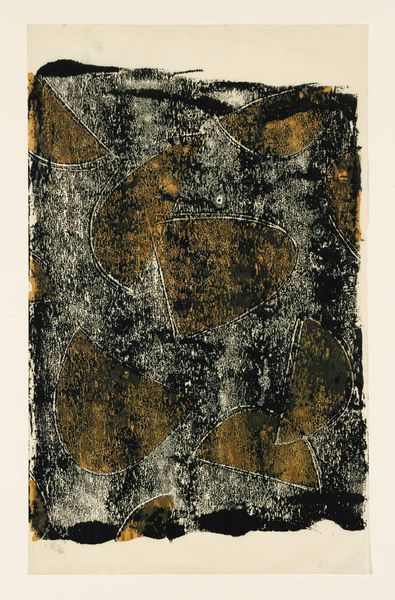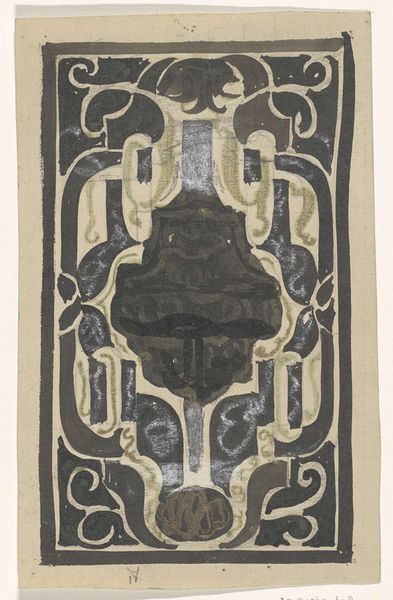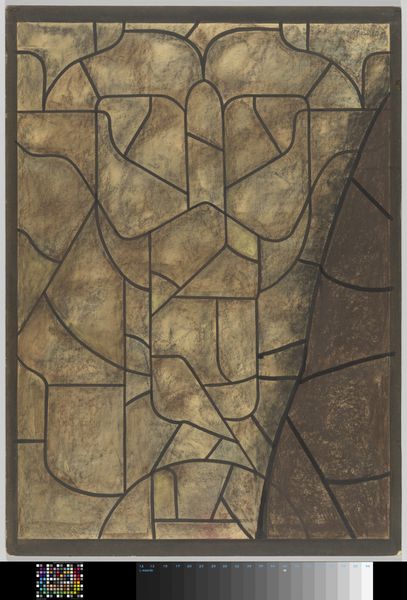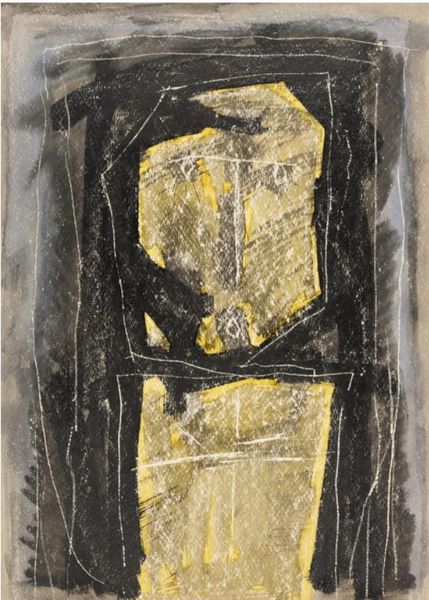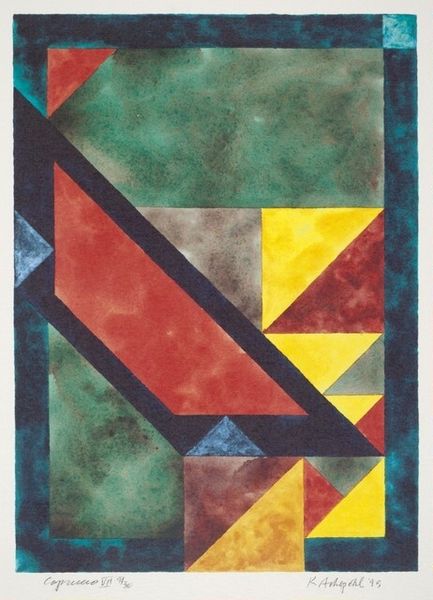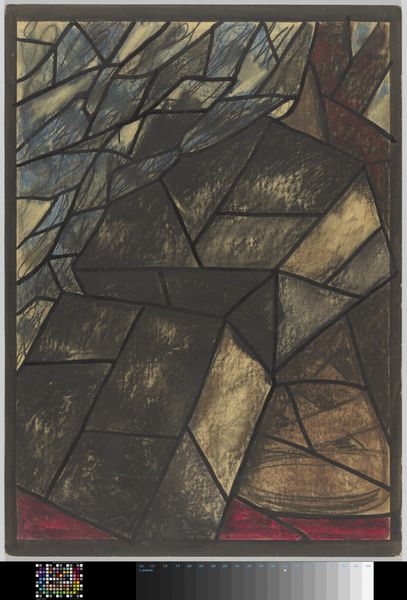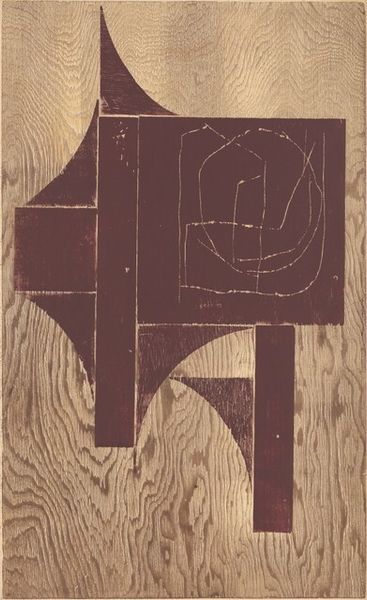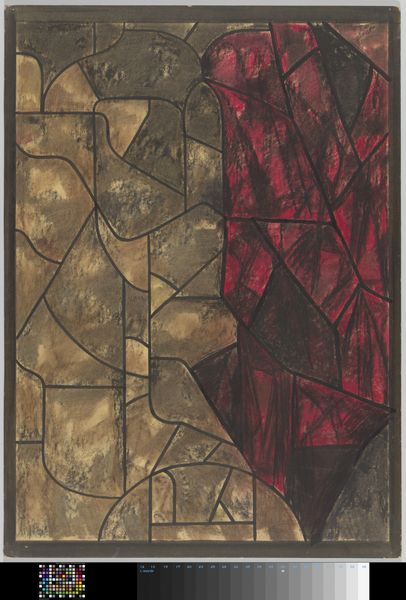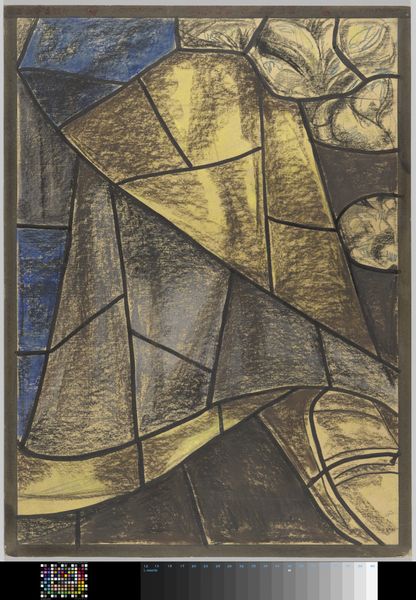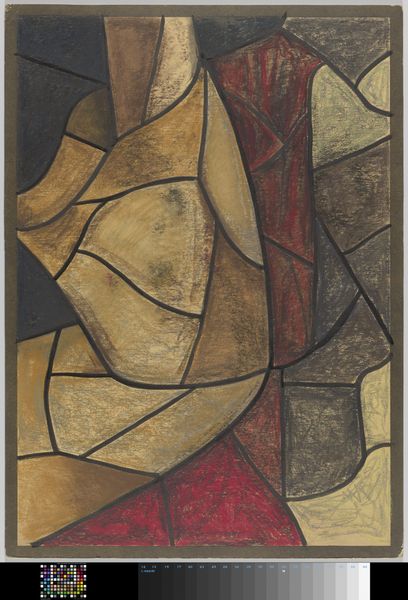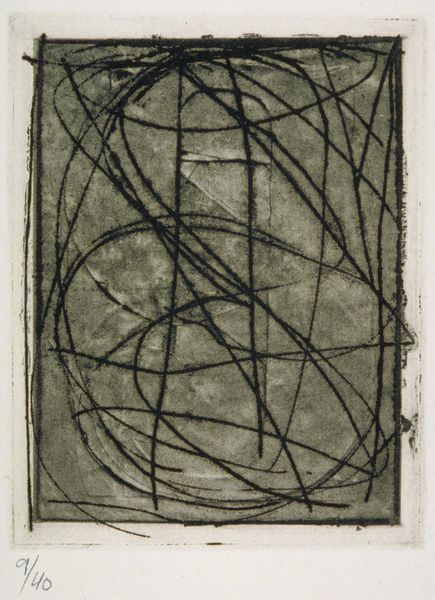
graphic-art, print, linocut
#
graphic-art
#
art-nouveau
# print
#
linocut
#
textured
#
abstract
#
abstract pattern
#
linocut print
#
organic pattern
#
geometric
#
abstraction
Copyright: Public Domain: Artvee
Editor: Here we have Richard Nicolaüs Roland Holst’s “Kiemcel II,” a linocut print made sometime between 1868 and 1938. It's an intriguing composition, all geometric shapes rendered in dark blacks and grays with touches of ochre. There's something quite severe about it, almost like a blueprint for a building that was never built. What strikes you about this piece? Curator: What stands out to me is how Holst's piece reflects the anxieties and aspirations of a rapidly changing society during the late 19th and early 20th centuries. Consider the cultural context: industrialization, urbanization, and shifts in social structures were impacting everything, and artists like Holst were responding in various ways. Do you see any echoes of movements like Art Nouveau in this abstraction, even as it pushes against the purely decorative? Editor: I can see how the shapes echo the organic forms found in Art Nouveau, though translated into a harsher, more geometric language. The linocut medium, itself a relatively modern technique at the time, suggests a democratisation of art production, right? Was there a specific socio-political angle to this kind of abstraction? Curator: Absolutely. Abstraction wasn't just about aesthetics; it was often a rejection of academic traditions and a statement about the artist's autonomy. The accessibility of printmaking techniques also played a role, potentially reaching a broader public outside the elite art circles. Can you imagine how the use of such graphic imagery could relate to contemporary poster art or even political propaganda? Editor: Now I'm starting to see connections to social movements and the changing role of art in society. This was definitely more than just playing with shapes. Thanks for opening my eyes to all of that. Curator: My pleasure! It's through these historical lenses that we can truly appreciate the layers of meaning embedded in seemingly simple abstract forms.
Comments
No comments
Be the first to comment and join the conversation on the ultimate creative platform.
